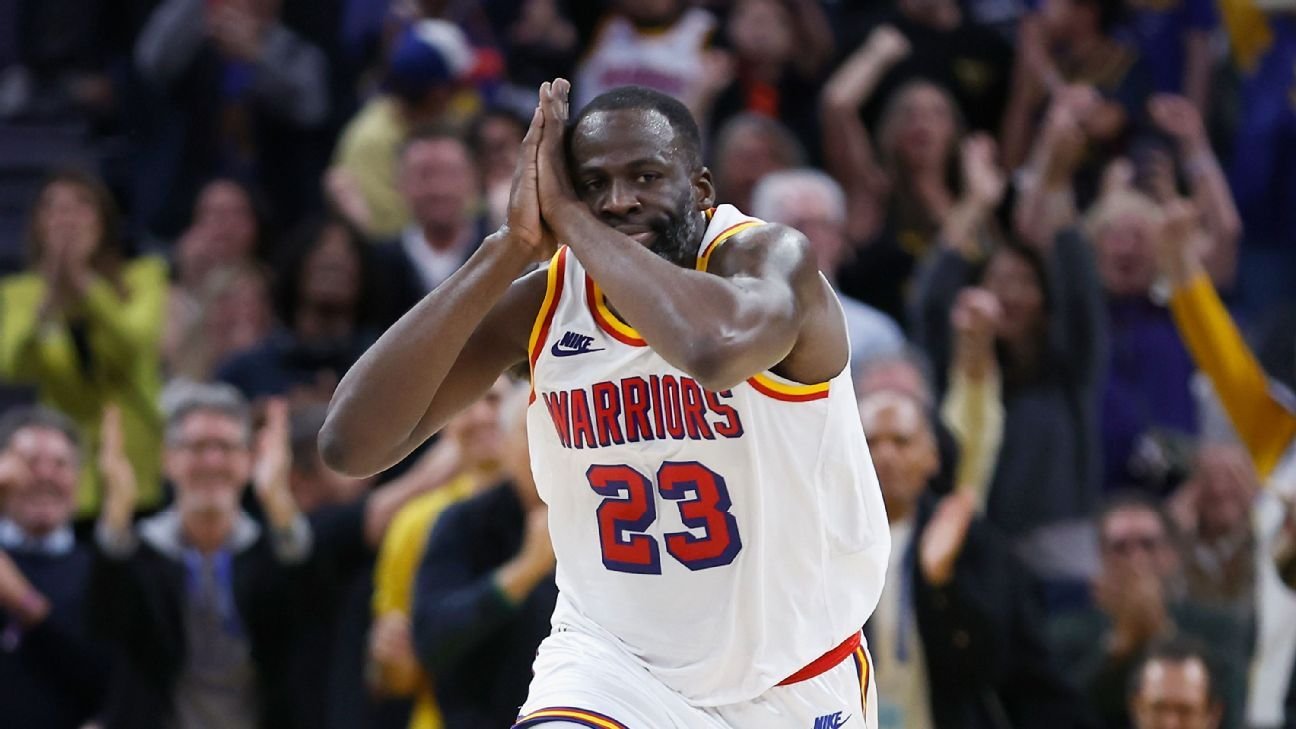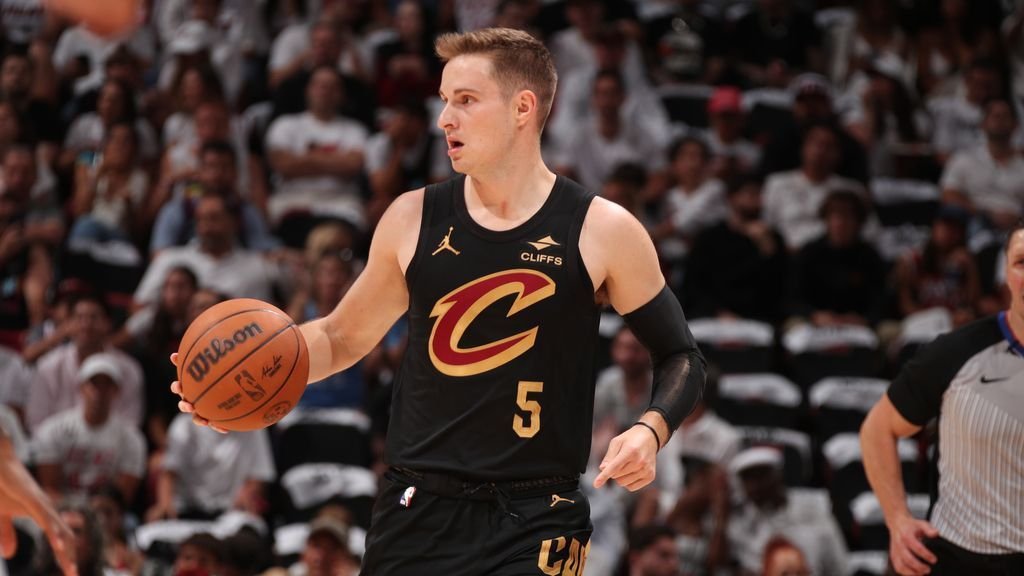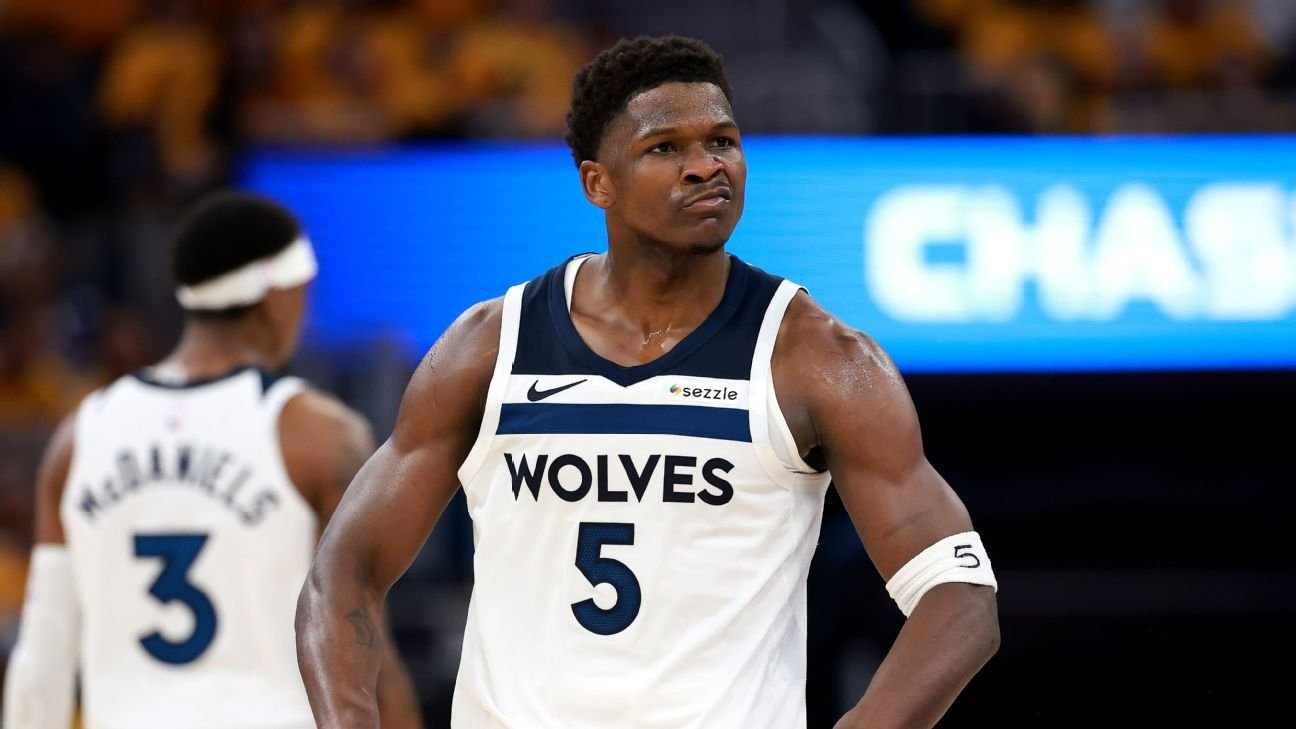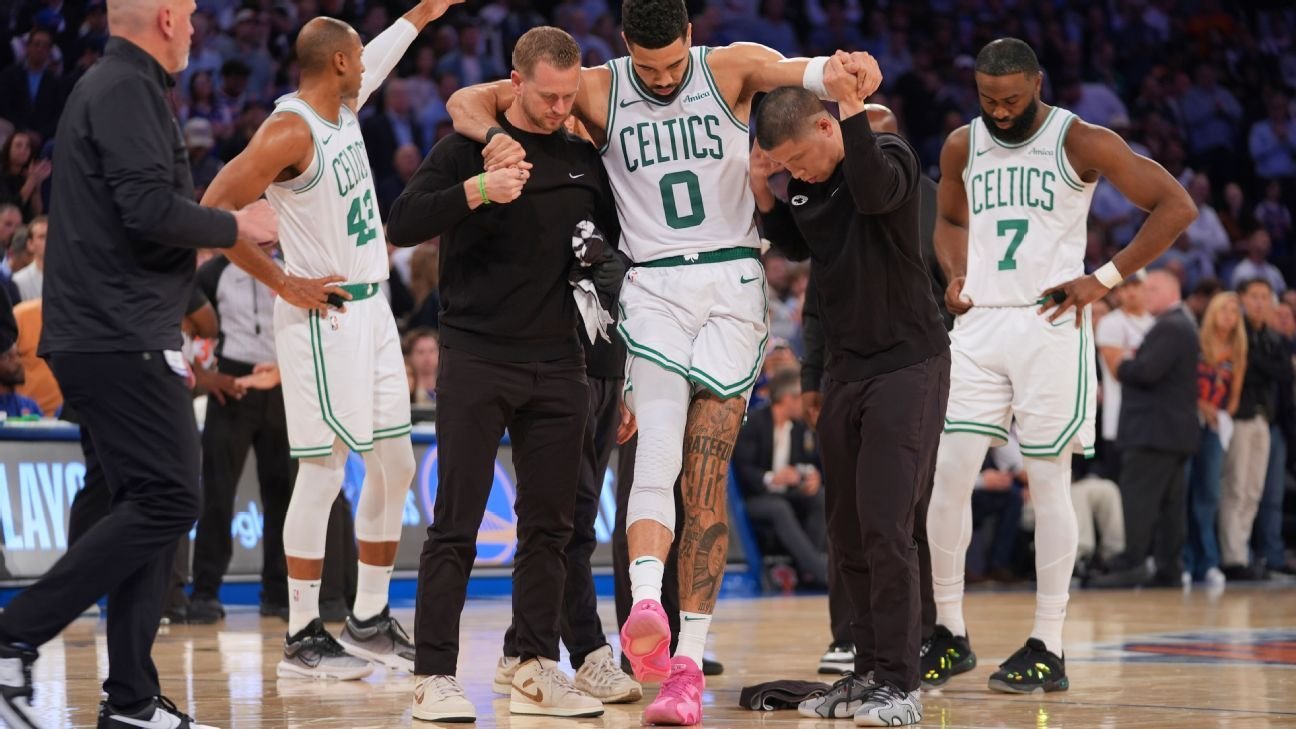[ad_1]
The ink wasn’t even dry on the 2023 NBA offseason and the new collective bargaining agreement was already under fire.
“You either make $50 million or $2 [million],” former player Austin Rivers said then. “It’s a joke, bro. I can’t tell you how many midlevel guys are signing for the vet minimum around the NBA.”
More scrutiny followed throughout the 2024 offseason when the league introduced the salary cap’s restrictive second apron, which curtailed high-spending teams adding to their roster outside of their own players. A year later, Golden State Warriors forward Draymond Green stoked the flames further when he said that the new CBA ruined the thrill of the annual free agency frenzy.
“I’m sitting in my mancave having a conversation with my wife. Baffled at the fact that NBA free agency is over,” Green posted on Threads in July. “Quite frankly it never really started. The level of anticipation leading up to July 1st was as exciting as the fireworks on the 4th. …
“One can only point to the ‘New CBA’ and the 2nd apron (hard cap) for absolutely putting an end to Free Agency as we once knew it.”
Is Green right? Are other offseason trends here to stay? To answer those claims — including whether the middle class of players is getting squeezed out and the state of restricted free agency — we played a game of fact or fiction.
The second apron has ruined free agency.
Verdict: Fiction (for now)
Draymond did have a point. Remember the 2010 offseason, when LeBron James, Chris Bosh, Dwyane Wade, Joe Johnson, Amar’e Stoudemire and Carlos Boozer kept everyone waiting on their free agency decisions? Then years later, when Kevin Durant (2016) and Kawhi Leonard (2019) did the same?
Two additions to the current CBA haven’t completely killed that level of anticipation — though it has become noticeably watered-down.
Starting the day after the Finals, teams are allowed to negotiate with their own free agents on a new contract. That means this year’s crop of free agents such as Kyrie Irving, James Harden, Julius Randle, Naz Reid, Fred VanVleet, Sam Merrill and Bobby Portis re-signed and were off the board before we reached June 30. Last year, Pascal Siakam and Malik Monk were among the top targets to re-sign early.
Also, blame the revised rookie and veteran extensions rules. The ability to extend for more money and years have players prioritizing guarantees now over the risks of entering free agency.
A player in the last year of their first-round contract is now eligible to extend for five seasons instead of four, even if the first-year salary is less than 25% of the salary cap. Jabari Smith signed such an extension in June, and Jalen Johnson, Trey Murphy III, Alperen Sengun and Jalen Suggs did so in 2024. In the first year under the current CBA, a record 14 players signed rookie extensions.
This summer could have seen Jalen Brunson, Giannis Antetokounmpo, Lauri Markkanen, Donovan Mitchell, Anthony Davis, Damian Lillard, Jimmy Butler, Rudy Gobert, Brandon Ingram, Derrick White, Ivica Zubac and Alex Caruso all become free agents. Instead, each signed long-term extensions.
“The mechanism of the collective bargaining agreement was very clear: We are trying to give incumbent teams an advantage to draft, develop and keep players,” NBA commissioner Adam Silver said during summer league. “Doesn’t mean there’s no free agency, but in many cases, you have situations where players are electing to stay in those markets. So, I don’t necessarily think that’s a bad thing.”
In the past three years, 51 veterans have signed extensions (that number will increase to 53 if Luka Doncic and De’Aaron Fox sign extensions this month), including 26 during the 2024-25 season. For comparison, 74 players signed veteran extensions from 2017 through 2023.
Teams are taking advantage of the stretch provision.
Verdict: Fact
A prominent agent posed the question in the early morning before a round of summer league games were set to begin in Las Vegas: “How many teams are projected to have cap space in the 2026 offseason?”
Under normal circumstances, the answer would have been eight; the Brooklyn Nets, Charlotte Hornets, Chicago Bulls, Los Angeles Lakers, LA Clippers, Portland Trail Blazers, Utah Jazz and Washington Wizards. But, as the Milwaukee Bucks showed on July 1, projecting teams with available cap space can be a futile exercise.
“Maximizing Giannis’ prime, our opportunities to win, I feel like that’s our responsibility always. So it was really a now versus future decision,” Bucks GM Jon Horst told the Athletic in July, referring to waiving and then stretching the $113 million owed to All-Star Damian Lillard over the next five seasons.
The Bucks would also buy out the $8.1 million owed to guard Vasilije Micic. Like Lillard, his $2 million salary was also stretched but over two fewer seasons. Those moves helped Milwaukee open the necessary room to sign Myles Turner to a four-year, $108 million contract.
1:10
Myles Turner signed with Bucks to stay in a competitive situation
Myles Turner talks about why he left the Pacers to join the Bucks in his introductory news conference.
The Bucks were not the only team to create cap space this way. The Memphis Grizzlies stretched the $11.1 million post-buyout salary of Cole Anthony over the next three seasons. Instead of signing a free agent with the room created, they elected to renegotiate and extend the contract of forward Jaren Jackson Jr.
The provision to create financial flexibility by waiving and then stretching salary owed to a player is not a new rule in the CBA. Since 2013 and up to this past offseason, 54 players and a combined $320 million in salary have been waived and stretched. Prior to Lillard, Nicolas Batum in Charlotte had the largest per-year cap hit of $8.9 million of a player stretched.
But in the past month alone, $223 million in salary has been stretched, $100 million less than the total amount from 2013 to 2024. Teams are willing to absorb eight-figure cap charges in the foreseeable future for the sake of creating cap space now — or in the case of the Phoenix Suns, escape financial purgatory.
Two weeks after Lillard was waived, the Suns bought out Bradley Beal and will likely stretch the $97 million owed to him over the next five seasons. (Teams have up until Aug. 29 to use the provision, as long as the stretched amount of all players does not exceed 15% of the salary cap.)
In this scenario, Phoenix will have a $19.4 million cap hit in the next five seasons but more importantly fall below the first and second apron. It will now have access to aggregate contracts sent out in a trade and the ability to use more than 100% of the traded player exception. Phoenix’s 2033 first-round pick is no longer in danger of becoming frozen, and the stretch provision will save the Suns more than $200 million in salary and luxury tax penalties this season.
The middle class of free agents has been squeezed out of the market.
Verdict: Fiction
“The data does not support this notion,” Silver said during summer league. “If you look at sort of minimum, lower-paid players, high-paid players and there’s some middle group that you call the middle class, if anything, it’s slightly up from where we were in the last few years of the old collective bargaining agreement.”
Silver was referring to the 84% of players that signed non-veteran minimum and first-round rookie contracts, for which the first-year salary was between $4 and $20 million. That’s an 8% increase from last offseason.
Of the 31 players listed, 19 switched teams in free agency. That 32% increase from last summer is a result of teams signing players to the non-tax midlevel exception (an increase from five to 10), expanded trade rules and acquiring free agents with a prior trade exception. For example, Atlanta acquired Nickeil Alexander-Walker in a sign-and-trade deal using a prior trade exception, and then used part of their $14.1 million non-tax midlevel exception to sign Luke Kennard.
“There’s a misconception that players aren’t being compensated the same ways they have in the past. That’s not true,” former Players Association President CJ McCollum told Front Office Sports last week. “Guys are making more money than they ever have. The middle class is making more money than they ever have before.”
Since the 2017-18 season, the salary cap has grown from $99 to $154.7 million, while total player salaries have increased from $3.3 billion to $5.4 billion.
Verdict: Fact and fiction
Yes, Chicago, Golden State, Philadelphia and Brooklyn currently have leverage in contract negotiations.
But the reality is that no team outside of Brooklyn (Thomas’ current team) has more than $14.1 million in money to sign any of those four players to an offer sheet. Even if the market was flushed with cap space, there have been only two restricted free agents (Deandre Ayton and Matisse Thybulle) to sign offer sheets since 2022.
Prospects for Kuminga and Grimes are also hurt because of first apron concerns if a sign-and-trade materialized. Because their outgoing salary counts as only 50%, the Warriors and 76ers are likely hard capped in a sign-and-trade.
But restricted free agency is not a new wrinkle. For years, players who did not sign rookie extensions have navigated around the stringent rule but only if they were willing to compromise on their next contract. Out of the 14 former first-round picks that received a qualifying offer since 2023 and then signed a contract, only three (Tyrese Maxey, Immanuel Quickley and Cameron Johnson) had a starting salary more than $20 million in the first season.
Kuminga would have been the fourth, but as ESPN’s Shams Charania and Anthony Slater reported, Kuminga declined a two-year, $45 million contract with the Warriors that would have included a team option.
The second apron has dissuaded teams from including bonuses in contracts.
Verdict: Fact
Remember in March, when the injury-ravaged Dallas Mavericks could not sign a 15th player because they were $50,000 below the first apron? That was because $4 million in bonuses to Kyrie Irving, Caleb Martin and P.J. Washington counted against the salary cap.
Dallas’ dilemma put teams on notice this offseason.
Out of the more than 150 players that signed a contract this offseason, none have bonuses negotiated into their contract. The list includes Irving and Minnesota Timberwolves forward Julius Randle, who received bonuses in their previous contracts that are not included in their current deals. For comparison, 23 free agents signed contracts in 2023 and 2024 with incentives included.
The decline in incentives has also affected first-round extensions. In the 2022 and 2023 offseasons, 11 of the 26 players who signed extensions had a bonus in their contract. Since then, only the Warriors’ Moses Moody has one.
Miami Heat guard Tyler Herro‘s extension signed before the 2023 CBA took effect is a strong reminder of why teams have taken a stand against negotiating bonuses. Herro has five — including ones for being named MVP, All-NBA and Defensive Player of the Year — with Miami getting charged $2.5 million against both the first and second apron.
The current CBA penalizes teams that draft well.
Verdict: Fact, unless you plan ahead
McCollum made an interesting comment recently when discussing the new CBA’s impact on the draft.
“You shouldn’t be punished for drafting well,” McCollum said. “Oklahoma City is going through right now where you have to pay a lot of players who are really good. And you draft them, you shouldn’t be punished for drafting well. You should be able to pay and keep and retain the players you’ve drafted. And when you have those windows to where you really have a chance to compete and win a championship, you shouldn’t have such severe restrictions.”
McCollum’s comment leaves a lot to unpack.
First, the statement is correct if we are basing it on the financial disadvantage teams face when players on max rookie extensions are named All-NBA, Defensive Player of the Year or MVP in their fourth season.
The Cleveland Cavaliers and Detroit Pistons took on an additional $8 million in salary this season ($45 million during the life of the contract) when Evan Mobley was selected Defensive Player of the Year and Cade Cunningham was named All-NBA.
The counterargument is to approach those extensions like Oklahoma City has with Chet Holmgren and Jalen Williams. The Thunder have protected themselves in case either player earns regular season honors.
Unlike Paolo Banchero‘s extension with the Orlando Magic that includes a 30% escalator (his $239 million extension increases to $287 million), if named All-NBA, MVP or Defensive Player of the Year, Holmgren does not have that in his contract. Williams’ salary next season increases to the same amount as Banchero, but only if he is named MVP, Defensive Player of the Year or All-NBA first team. There are escalators for being named second team and third team but at a lesser percentage.
GM Sam Presti and the Thunder also had the foresight of weighing future extensions in how they lined up their finances and built draft assets. Over the past two seasons, OKC has signed Isaiah Hartenstein, Isaiah Joe, Aaron Wiggins, Jaylin Williams and Ajay Mitchell to contracts that decline, have team options or are partially guaranteed.
And the champs won’t be ending that plan any time soon. The Thunder have a surplus of 13 first-round picks and 16 second-rounders in the next seven years, with up to four first-rounders in the 2026 draft alone.
[ad_2]



